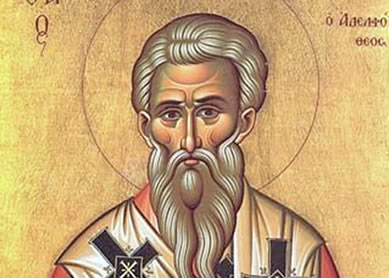If someone asked you, “who is St. James?” you might be hard-pressed to answer. The Gospels feature James in a few cameo roles: James and John, the sons of Zebedee, witness the transfiguration along with Peter and are invited by Jesus to the garden in Gethsemane. But these scriptural instances provide scant detail about the apostle James other than his consistent befuddlement at important moments of Jesus’ ministry: missing the significance of the Transfiguration (
From the vague description of his death in Acts (
James’s emergence as a patron saint of Spain begins in the seventh century, when Isidore of Seville mentions James’s death in Jerusalem and ambiguously refers to his burial. In the ninth-century, legends emerge about the discovery of James’s body: his tomb is “discovered” in Galicia. Some legends claimed to have located his tomb in his eventual namesake city, Santiago de Compostela. (“Iago” derives from the Latinized “Jacobus,” for James.) In one version, a Spanish hermit was drawn by a divine light in the sky to a spot in the woods and discovered a Roman-era tomb containing the body of James. In another story, James’s body was found washed up on the Galician coast miraculously undamaged and covered in scallop shells. Despite conflicting stories of the discovery of James’s body or tomb, a shrine housing the presumed relics of St. James was constructed in the ninth century in Santiago de Compostela, and a pilgrimage destination was born.
The reemergence of James in the Christian tradition coincided with the battles between Christians and Muslims on the Iberian Peninsula. The Christians were disheartened and outnumbered, in part because the Muslim forces bore a powerful talisman, an arm bone of Muhammad housed in Cordoba, Spain. To counter such a relic, stories began to proliferate that James came down from heaven, armed with a sword, and led Christian troops to victory. James thus became known as St. James “Matamoros” (the Moorslayer), and statues and artworks depicting this violent image survive today. By the twelfth century, a Romanesque cathedral was constructed around the only purported remains of an apostle west of Rome. The growth in interest in James was timely because it shored up Christian morale, and the pilgrimage traffic filled Christian coffers.
Christian pilgrimage became popular in the Middle Ages due to the intense devotion to relics of the saints. Pilgrims journeyed to expiate sins and for the additional side benefits. In his collection of writings and sermons known as the Liber Sancti Jacobi, Pope Callixtus II notes that the pilgrim drawn to Santiago did so in the hope of encountering or witnessing the miraculous St. James.
Miracles and miracle stories continue from the Middle Ages into the modern period, as pilgrims, both ancient and modern, attest to healings or cures provided by St. James on the road to Santiago. The scallop shell is ubiquitous on the road to Santiago and in statuary representations of St. James. The grooves of a scallop shell laid on its side exhibit many spread-out lines that begin to converge at one point. The road to Santiago similarly begins at several diverse points (one starting point is at St. Denis outside Paris), and all paths have a final destination at the tomb of St. James.
Bibliography
- Brown, Peter. The Cult of the Saints: Its Rise and Function in Latin Christianity. Chicago: University of Chicago Press, 1982.
- Davidson, Linda K. and Thomas Coffey. The Miracles of Saint James. New York: Italica Press, 2008.
- Hitt, Jack. Off the Road: A Modern-Day Walk Down the Pilgrim’s Rout into Spain. New York: Simon & Schuster, 2005.


